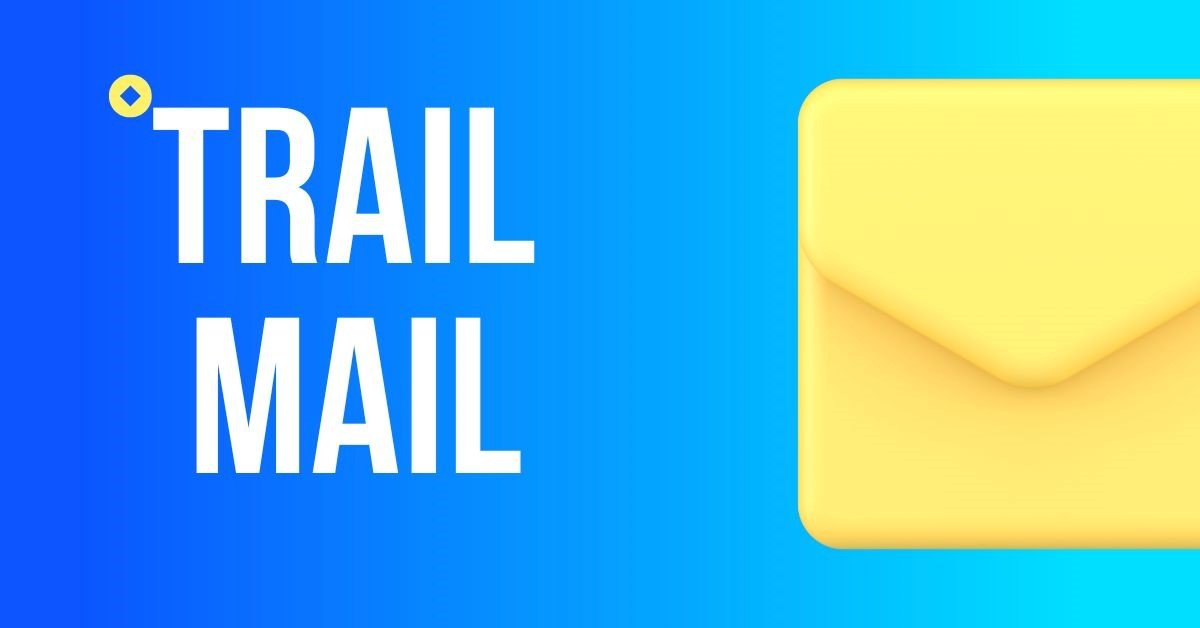Tech
Understanding Trail Mail: The Hidden Power of Email Threads

In today’s digital world, communication happens at lightning speed. Among the countless tools we use every day, email remains one of the most vital, especially for professional communication. Yet, many people overlook a simple but powerful concept within email correspondence—the trail mail. This term often appears in corporate settings and plays a crucial role in maintaining clarity, accountability, and continuity in communication. Understanding what a trail mail is, why it matters, and how to use it effectively can significantly improve your professional interactions.
What Is a Trail Mail?
A trail mail refers to an ongoing email thread that includes all previous replies, forwards, and messages exchanged between two or more parties on a specific topic. It serves as a conversation history that documents the communication chain. For example, when you reply to an email without deleting prior messages, you’re essentially continuing the trail. This thread becomes a record of who said what and when—acting as a digital paper trail.
Read More: How to Choose the Right Web Hosting Control Panel for Your Business in 2025
The Purpose of Trail Mail
The main purpose of a trail mail is to maintain context and transparency. When communication spans days or weeks, it’s easy to forget earlier details. A trail mail keeps everything in one place, so you don’t have to dig through your inbox to recall key points. In professional environments, this ensures decisions, requests, and approvals remain traceable and well-documented.
Why Trail Mail Matters in Business Communication
Trail mails are more than just convenience—they are a critical tool in professional accountability. In corporate environments, every instruction, update, or agreement may need to be reviewed later. Having a trail mail allows employees and managers to revisit past messages to clarify decisions or settle disputes. It provides a level of security and transparency that instant messaging or phone calls can’t match.
Benefits of Maintaining a Trail Mail
The advantages of keeping a trail mail are numerous. It ensures clear communication, minimizes misunderstandings, and serves as evidence when necessary. For instance, if there’s confusion about project timelines or client deliverables, the email thread can clarify who committed to what. Additionally, trail mails help new team members get up to speed by reviewing previous discussions.
How to Write a Professional Trail Mail
Writing a trail mail effectively involves clarity, tone, and structure. Always start with a polite greeting, summarize key points if the thread is long, and respond directly to questions or concerns raised earlier. Avoid deleting previous messages unless they are irrelevant. End with a courteous closing statement. Keeping your tone professional, concise, and respectful ensures smooth communication.
The Role of Trail Mail in Corporate Culture
In corporate culture, trail mails are a symbol of transparency and professionalism. Many organizations prefer communicating through email for this reason—it creates a record that promotes accountability. Managers and employees rely on trail mails to track project progress, delegate responsibilities, and verify commitments. A well-maintained email thread reflects organized and responsible communication habits.
Common Mistakes People Make with Trail Mails
One common mistake is deleting previous emails when replying. This breaks the chain and causes confusion. Another is changing the subject line, which makes it difficult to track the conversation later. Some also reply carelessly without reviewing earlier messages, leading to repetitive or inaccurate responses. To avoid these issues, always check the full thread before hitting “Send.”
Trail Mail vs. Fresh Email: When to Use Each
A trail mail is ideal for ongoing discussions, but sometimes a fresh email is better. If the subject changes significantly, or if the thread becomes too long and confusing, starting a new email helps maintain clarity. However, when referencing past discussions, attach or forward the relevant trail mail to preserve context. The key is knowing when continuity is helpful and when it becomes cluttered.
Maintaining Professional Etiquette in Trail Mails
Professional etiquette in trail mails is crucial. Avoid overusing “Reply All” unless everyone in the thread truly needs the information. Be mindful of tone—emails can easily be misinterpreted. Keep responses polite, even when clarifying disagreements. Ensure your grammar, punctuation, and structure reflect professionalism, as every message contributes to your personal image at work.
Trail Mail as a Record of Accountability
In workplaces, trail mails often serve as official documentation. They can be referred to during audits, performance reviews, or even legal situations. A clear email trail proves that communication occurred, instructions were given, and responses were made. In this sense, every email is not just a message but also a potential record of accountability and responsibility.
How Trail Mails Improve Collaboration
Collaboration thrives on clear communication. Trail mails allow team members to track ongoing projects without losing context. Everyone can see updates, revisions, and decisions made along the way. For cross-functional teams working remotely or across time zones, a well-maintained email thread ensures seamless information flow, reducing the risk of errors and miscommunication.
Security and Confidentiality in Trail Mails
While trail mails are useful, they can also contain sensitive information. Always double-check recipients before forwarding or replying to avoid data leaks. If a conversation includes confidential details, use discretion when sharing it externally. Most organizations have guidelines for handling sensitive information—always follow them to maintain professionalism and trust.
Trail Mail Etiquette for Team Leaders and Managers
For leaders, managing trail mails efficiently sets the tone for the entire team. A clear and concise email structure helps employees understand expectations and deadlines. Managers should also encourage team members to keep important trails intact for future reference. Proper documentation through trail mails prevents miscommunication and builds a culture of accountability.
The Role of Trail Mails in Remote Work
In the remote work era, where teams operate across different time zones, trail mails have become indispensable. They allow asynchronous communication—team members can catch up on discussions even after hours. A single email thread acts as a centralized hub of information, reducing dependency on real-time meetings. This improves efficiency and flexibility for modern teams.
Avoiding Email Overload While Managing Trail Mails
One downside of trail mails is inbox overload. Long threads can become cluttered and difficult to navigate. To manage this, keep your replies short and relevant, summarize previous discussions when necessary, and use bullet points for clarity. Archive completed threads and use folders or labels to organize ongoing ones. Efficient email management ensures productivity without stress.
When to Break a Trail Mail Chain
Sometimes, continuing a trail mail becomes counterproductive—especially when the discussion drifts far from the original topic. In such cases, start a new email with a clear subject line. You can still include the old thread as an attachment for reference. This approach keeps communication focused and prevents confusion among recipients.
Using Trail Mails for Client Communication
When dealing with clients, trail mails build trust. They demonstrate professionalism and provide a transparent record of commitments, pricing, and timelines. If a client ever questions a detail, you can refer to the trail for clarification. It also shows that your company values organization and open communication—qualities clients appreciate in long-term partnerships.
Digital Transformation and the Future of Trail Mails
With AI-driven tools and integrated communication platforms, the way we use emails is evolving. However, trail mails will continue to hold importance because they provide a clear, chronological record of human decision-making. Even in collaborative apps like Slack or Teams, people often summarize outcomes through follow-up emails to maintain official documentation.
Conclusion
Trail mails may seem like a simple concept, but they form the backbone of professional communication. They preserve context, promote accountability, and ensure clarity in every exchange. Whether you’re working in a large corporation or running a small business, using trail mails effectively can save time, prevent misunderstandings, and strengthen your professional relationships. In an era where communication moves fast, the humble trail mail remains one of the most reliable tools for ensuring nothing gets lost in translation.
Read More: The Growing Importance of Secure File Sharing Solutions in 2025
FAQs
1. What does “trail mail” mean in simple terms?
Trail mail refers to an ongoing chain of email messages that includes all previous replies and communications on the same topic.
2. Why are trail mails important in the workplace?
They help maintain clarity, provide proof of communication, and ensure accountability for all decisions and actions.
3. Can I delete old messages in a trail mail?
It’s best not to delete older parts of a trail unless they’re irrelevant or sensitive, as the full thread maintains context.
4. Should I use trail mail for every discussion?
Not always. For new topics or unrelated matters, start a fresh email with a relevant subject line to avoid confusion.
5. How can I manage long email trails effectively?
Summarize key points, archive completed threads, and use folders or filters to keep your inbox organized and manageable.
-

 Tech1 year ago
Tech1 year agoHow to Use a Temporary Number for WhatsApp
-

 Business2 years ago
Business2 years agoSepatuindonesia.com | Best Online Store in Indonesia
-

 Social Media1 year ago
Social Media1 year agoThe Best Methods to Download TikTok Videos Using SnapTik
-

 Technology1 year ago
Technology1 year agoTop High Paying Affiliate Programs
-

 Tech10 months ago
Tech10 months agoUnderstanding thejavasea.me Leaks Aio-TLP: A Comprehensive Guide
-

 FOOD1 year ago
FOOD1 year agoHow to Identify Pure Desi Ghee? Ultimate Guidelines for Purchasing Authentic Ghee Online
-

 Instagram3 years ago
Instagram3 years agoFree Instagram Auto Follower Without Login
-

 Instagram3 years ago
Instagram3 years agoFree Instagram Follower Without Login




















